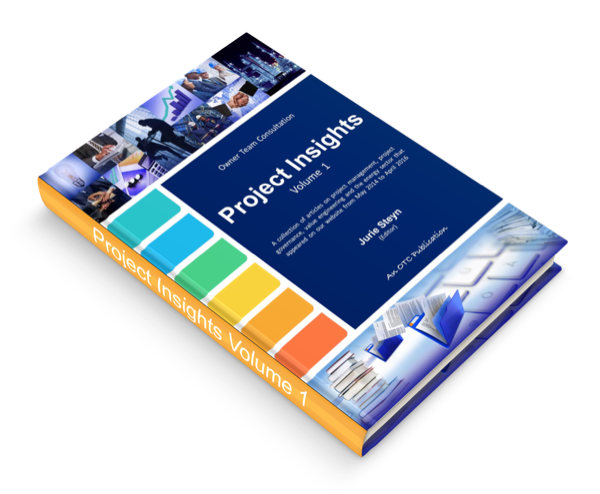Site Selection for Process Plants
In this article, we’ll discuss the site selection process, we’ll see how facility objectives influence site selection, we’ll spend time on site selection criteria and discuss the site selection decision matrix.
Introduction
Selecting a site for a process plant is far more onerous than deciding where the new corporate headquarters should be built. Everyone knows the rumour that corporate headquarters are normally built where the chief executive’s wife wants to reside…
A formal site selection process is one of the project optimisation techniques. Project optimisation can be defined as finding the solution, from the available alternative options, with the most cost effective or highest achievable performance under the given constraints, by maximising desired factors and minimising undesired ones. Here we want to find the best site, from the available candidate sites, to deliver the highest performance, whilst minimising adverse consequences.
In this article, we’ll discuss the site selection process, we’ll see how facility objectives influence site selection, we’ll spend time on site selection criteria and discuss the site selection decision matrix.
Site selection process
Site selection involves measuring the needs of a new project against the merits of potential locations. The site selection, or facility location, decision is triggered when organisations seek to locate, relocate or expand their operations. The process involves the identification of alternative potentially viable locations, analysis thereof, followed by evaluation and ranking of the sites. Part of the business activities of the project team is to search for and select the optimal location.
A four-phase approach is usually followed for site selection, including screening, site work, negotiations and finalisation, as shown in Figure 1. The screening phase will include a fatal flaw analysis to reduce the list of candidate sites to only those that are viable. Site work and negotiations will be necessary to obtain the information that will be used in the selection and acquisition stage.

Figure 1: Site selection process (Adapted from Greyhill Advisors, undated)
Facility objectives
Clear objectives with the proposed project site at different stages of the venture’s life-cycle will inform the site selection process.
Obviously, many things change over the life-cycle of a facility and it would be impossible to plan for all eventualities. However, the strategic intent with the facility needs to be known with some degree of certainty in the short- and medium-term. Objectives for the facility in the longer-term and on closure thereof may be less certain. Issues relevant to the different stages of the facility life-cycle are listed below:
Short- to medium-term:
- What is the design life of the facility?
- Will there be growth in current product line?
- Will other facilities be constructed in addition to the existing?
- Will management and administrative personnel be located on site?
- Is a secondary safety zone required around the facility?
- How close can residential areas encroach on the facility? and
- Will R&D facilities be located on site?
Long-term to closure:
- What is the expected life of the facility?
- Will other facilities be constructed in addition to the existing?
- Will site be reused by the owner for other projects?
- Will site be transferred to others for alternative use?
- Can you afford to sell the facility?
- Has the groundwater been contaminated? and
- Who stands to be affected by movement of contaminated groundwater?
Site selection criteria
Overview
Site selection criteria are aspects of a proposed site that are important to the success of a project and which can be used for the assessment of sites. Any number of criteria may be selected to evaluate, compare and prioritise the candidate sites.
Site selection criteria consist of ‘must’ criteria and ‘wish’ criteria. Projects differ and therefore the most applicable selection criteria will also differ from project to project. It is essential that the relevant ‘must’ and ‘wish’ criteria are identified and agreed before candidate sites are identified to eliminate bias.
An overview of typical ‘must’ and ‘wish’ criteria is presented in Figure 2. Note that this is not an exhaustive list of criteria, but rather a starting point for developing your own criteria.

Figure 2: Criteria influencing site selection
‘Must’ criteria
‘Must’ criteria are used in the initial screening phase of site selection. All ‘must’ criteria must be fully satisfied for a candidate site to be considered further. For instance, if a plant layout requires a minimum area of 5 hectares, any potential site smaller than this cut-off point should be eliminated from the list. ‘Must’ criteria for site selection typically include:
- Suitable size: Site size must be larger than the minimum plant layout requirement. Sites should also not be significantly bigger than the required size as this impacts on affordability, unless future plant expansions are likely;
- Availability: The site should be available for purchase and free from encumbrances, such as contamination or legal disputes. These matters can take a long time to resolve;
- Affordability: The asking price for the site should be realistic and based on a valuation thereof. The selection team should set a maximum price that they would be willing to pay from the impact it has on the profitability of the project;
- Accessibility: The site should be accessible for bringing the process equipment to site, and for feed material and product logistics. Ideally, access should not necessitate the construction of new roads, rail spurs or bridges;
- Political stability: This may be applicable if a development in a foreign country is considered. It can involve continued government support for a project or physical security of a facility; and
- Proximity to primary feedstock and/or market: The project prefeasibility study will determine how important it is to have the plant site near the primary feedstock or market, depending on the type of project.
Try to identify at least three, and not more than five, criteria in the ‘must’ category which are applicable to your project.
‘Wish’ criteria
Once the screening of candidate sites has been completed using the ‘must’ criteria, a shortlist can be drawn up of sites for further evaluation. Site specific information will be required for evaluating the sites against the ‘wish’ criteria. For this reason, it is prudent to engage the services of engineering, hydrogeology and other specialists with knowledge of the sites. If heavy equipment is to be installed, or contamination of groundwater under a site is suspected, it may prove necessary to conduct some physical testing on the sites. Tests could include core sampling, auger samples, soil-vapour testing and groundwater analysis.
Referring to Figure 2, the ‘wish’ criteria are arranged in five categories. It is recommended to have at least two and preferably four ‘wish’ criteria per category for a meaningful decision analysis. The decision matrix, discussed in the next section, is a useful tool for performing a decision analysis. The categories and criteria are as follows:
Business ‘wishes’: These include criteria relating to the business strategy, ease of operation and business risk reduction. The objectives for the site in the medium- to long-term should be considered here. Business ‘wishes’ could include:
- Proximity to feed material, or customers, being the reciprocal of the must criteria;
- Process integration requirements;
- Governmental support;
- Tax incentives (special development zone);
- Nearest (industrial) neighbours;
- Supply chain requirements;
- Product stability/life; and
- Future plant expansion.
Infrastructure & Services ‘wishes’: These include the availability of infrastructure and services that would otherwise have to be supplied as part of the project. Pre-existing infrastructure might reduce the time to completion of the project significantly and decrease the required capital expenditure. Infrastructure and services ‘wishes’ could include:
- Housing;
- Electricity supply;
- Water supply;
- Town infrastructure;
- Policing and security;
- Fire brigade;
- Airport;
- Hospital and/or clinic; and
- Proximity to support services.
Environmental ‘wishes’: These include criteria with an environmental flavour and relate to the environmental conditions and requirements, the ability of the environment to accommodate a process plant and waste disposal facilities. Expect some overlap with infrastructure & services and social ‘wishes’. Environmental ‘wishes’ could include:
- Climatic conditions;
- Assimilative capacity of the receiving environment;
- Specific regional air quality requirements;
- Water supply;
- Effluent treatment facility;
- Hazardous waste disposal facility;
- Secondary safety zone; and
- Regional history of natural disasters, i.e. fires, floods and seismic activity.
Social ‘wishes’: These include criteria relating to the quality of life of workers and the community, and the availability of suitably qualified manpower for the complex. It also deals with the presence of sites of historical and cultural significance on or around the candidate site. Social ‘wishes’ could include:
- Quality of life for workers/expats;
- Political climate;
- Manpower availability;
- Labour cost;
- Labour union activity;
- Historic landmarks;
- Proximity of housing to site;
- Training facilities to support project;
- Sites of cultural significance; and
- Security requirements.
Geological ‘wishes’: These include criteria of a geological and hydrogeological nature and aim to give an indication of the ease of construction and of current or future groundwater challenges. Geological wishes could include:
- Topography of the land;
- Soil type (piling requirements);
- Underground structures;
- Number and type of industrial and other neighbours;
- Groundwater quality;
- Direction of groundwater flow; and
- Pollution originating from neighbouring facilities.
The criteria listed in the different categories are examples. In many cases, the specific requirements of a project may dictate site selection criteria.
Decision matrix for site selection
To be able to make an unbiased site selection, a decision matrix is used where site criteria are scored for each of the candidate sites. After identifying the site selection elements, the next step is to assign weighting factors to each criterion.
The criteria selected and the allocated weights will differ from case to case. It is essential to select and agree the decision criteria and weights for each beforehand, otherwise the process can be manipulated to force a decision.
A decision matrix for site selection is shown in Table 1. Any consistent scoring and weighting system can be used. To keep it simple, it is suggested to use ranking scores of 1 to 5, as well as weights of 1 to 5. Scores for each of the criteria are recorded in the matrix for each of the candidate sites. Once completed with the scoring, the scores are multiplied with the weights and the answers recorded in the column in Table 1 marked SxW (Score x Weight). The SxW results are totalled for each of the sites and the preferred site should be the one with the highest total score.
It may be possible for two sites to achieve the same total score and in these cases other factors can be considered to make a final site selection. The site selection process ranks the sites from most preferable (highest total) to least preferable (lowest total).

Table 1: Decision matrix for site selection
What if two sites come out equal?
In the unlikely event that two or more of the list of candidate sites achieve the same total score, the site selection process must be able to address this matter.
The way to do this is to list all possible adverse consequences for each of the top scoring candidate sites. This forces the decision team to consider other important criteria in the final decision. The site with the least adverse consequences will then be the preferred site.
Another way is to revisit the decision matrix and review some of the relative scores, but this option should only be used as a last resort because it opens the way for forcing a decision.
This formal site selection process provides all the backup to support the final proposed site for the process plant.
Concluding remarks
Site selection for a process plant is one of the critical decisions for any project. The use of a formalised selection process helps to eliminate emotion in the final decision making. The formal selection process is also useful in communicating the final decision. However, final site selection for process plants is not the prerogative of the project manager. The project manager owns the selection process, participates in it, and makes recommendations to the project approval body.
To remove bias during site selection, it is essential to select and agree the decision criteria and weights for each beforehand. Otherwise the site selection process can be manipulated to force a predetermined decision. Bias can be further reduced by increasing the number of decision criteria and by using a larger team of decision makers.
References
Greyhill Advisors, Undated, The site selection process. Available from http://greyhill.com/site-selection-process . Accessed on 3 January 2017.
Charl Buys
Consulting Partner
Charl has over 40 years experience in engineering and business management. He has worked in the steel industry and over 30 years in petrochemical and xTL sectors. More...
Jurie Steyn
Consulting Partner, Director
Jurie holds a BEng(Chem)Hons and an MBA. He has more than 37 years of engineering, operations management and functional management experience. He started, developed and managed the Environmental & Risk Engineering group in Sasol Technology for more than 14 years. More...
DOWNLOAD
You might also enjoy:
Introduction to Engineering Management
In this article the roles and responsibilities of an engineering manager and the interaction between the engineering manager and the project manager is explored. Introduction There is sometimes confusion regarding the role of, and need for, an engineering manager on a...
The Importance of Framing and Alignment on a Project
The objective of the initial opportunity framing process is to ensure the right problem is tackled, from the right perspective, by the right people. Framing a project properly at the outset will assist in aligning the team towards success and reduce the probability...
The project management triangle conundrum: Selecting between Quality, Cost, Time
It is often said that good and fast projects are expensive, good and cheap projects are slow, and cheap and fast projects are of poor quality. It is our opinion that this dogma leads to a totally inadequate setting of the project framework and does not provide the...






